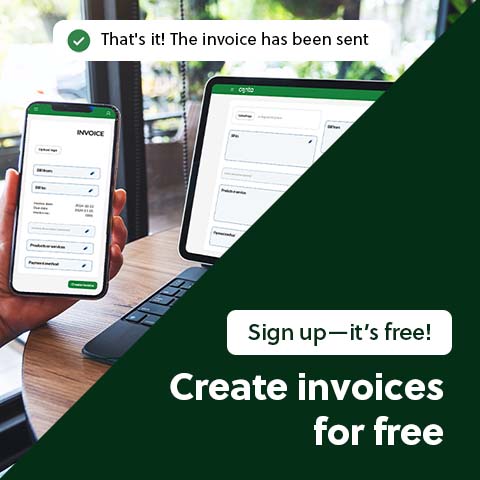Cash flow management is tracking and controlling what money comes in and out of your business. This is key to achieving good liquidity in your business.
Cash flow management is about planning ahead financially. Cash flow is basically an overview of the money that comes into the business and goes out of the business. You can, and should, budget and plan what your business’s cash flow should look like, however sometimes you have to spend more than you planned for or maybe your clients end up paying later than you expected.
Cash flow management works the same way for small and larger businesses. However, the smaller your business is, the less transactions you have and the less you have to do to manage your cash flow.
Read also: The ultimate guide to liquidity and cash flow
Different types of cash flow
Cash flow from operations
Cash flow from operation is income and expenses that occur in the ordinary operations of your business. This can be from production or sale of goods or services. Cash flow from operation determines whether or not a company has enough funds coming in to pay bills and operating expenses. To ensure the long-term viability of your company, you should have more cash inflow than outflows.
You can download our free cash flow forecast template and start planning today.
Cash flow from investing
Investing cash flow shows how much money has been generated from or spent on investment activities in a given period.
Cash flow from financing
Financing cash flow is the net flow of cash that is used to fund the business and the working capital. These types of transactions involve debt, equity or dividends. Cash flow of finances provides investors with insight of on your business and how well the capital structure is managed.
Read also: How to improve the liquidity of your business
3 tips for good cash flow management
1. Make a cash flow forecast
Having a cash flow forecast is essential for your business, and provides many advantages, such as helping you make good decisions and maintain the financial stability of your business. When creating cash flow forecasts you can either create one from scratch or use a template.
Try the free cash flow template from Conta
2. Limit your expenses
Make sure you have control over your expenses. It’s a good idea to map out what you need and what is a nice-to-have. If you need to cut your expenses, you should get rid of the nice-to-haves. Maybe you can find a cheaper solution or cut some expenses? One example is choosing free invoice software, like Conta.

3. Have a buffer
When you run a business, not everything is going to go according to plan. Maybe your customers don’t pay on time or at all, or maybe you have an unforeseen expense. If so, you should have some extra funds to cover this.





